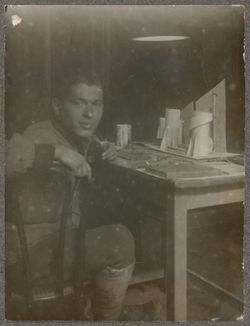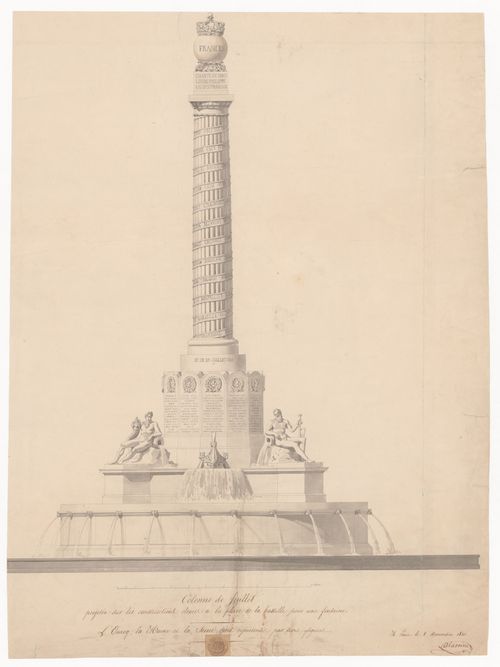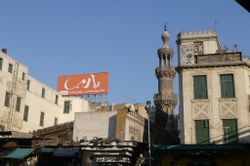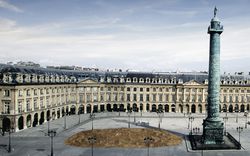documents textuels
Esterhazy - IMC Reference
ARCH253537
Description:
memorandums, clippings, The Quiet Revolution, a call for action in world agriculture, 1965 by IMC, 1965 IMC annual report
1956-1966
Esterhazy - IMC Reference
Actions:
ARCH253537
Description:
memorandums, clippings, The Quiet Revolution, a call for action in world agriculture, 1965 by IMC, 1965 IMC annual report
documents textuels
1956-1966
dessins
AP148.S1.1968.PR01.004
Description:
Includes two separate drawings that make up one drawing. Text below the drawings refer to ideas of a revolution against violence.
ca. 1968
Front and section project drawings, Prison project
Actions:
AP148.S1.1968.PR01.004
Description:
Includes two separate drawings that make up one drawing. Text below the drawings refer to ideas of a revolution against violence.
dessins
ca. 1968
La chercheure en résidence Aglaya Glebova présente sa recherche : Les Vkhutemas, ateliers supérieurs d’art et de technique, étaient financés par l’état afin de préparer une nouvelle génération d’artistes et d’architectes révolutionnaires à bâtir une modernité proprement soviétique. Dissoute par suite de pression politique en 1930, l’école n’a jamais disposé d’un(...)
Maison Shaughnessy
29 juin 2017, 18h
Séminaire de chercheur en résidence : Aglaya Glebova
Actions:
Description:
La chercheure en résidence Aglaya Glebova présente sa recherche : Les Vkhutemas, ateliers supérieurs d’art et de technique, étaient financés par l’état afin de préparer une nouvelle génération d’artistes et d’architectes révolutionnaires à bâtir une modernité proprement soviétique. Dissoute par suite de pression politique en 1930, l’école n’a jamais disposé d’un(...)
Maison Shaughnessy
DR1967:0011
Description:
- The pedestal of the memorial column depicted in this elevation is inscribed with the dates of that revolution of 1830 and the names of French citizens who died during that revolution. Banners inscribed with French placenames spiral up the fluted column, which is surmounted with an inscribed plinth, a globe, and a crown. The memorial column is set in a fountain.
architecture
1831
Elevation for the Colonne de juillet
Actions:
DR1967:0011
Description:
- The pedestal of the memorial column depicted in this elevation is inscribed with the dates of that revolution of 1830 and the names of French citizens who died during that revolution. Banners inscribed with French placenames spiral up the fluted column, which is surmounted with an inscribed plinth, a globe, and a crown. The memorial column is set in a fountain.
architecture
périodiques
ARCH271658
Description:
Issue of April 7, 1980, vol. XCV, no. 14 of "Newsweek" with an the article "The Solar Revolution" about solar homes including Kelbaugh House in Princeton, New Jersey.
April 7, 1980
Article on solar energy featuring Kelbaugh House
Actions:
ARCH271658
Description:
Issue of April 7, 1980, vol. XCV, no. 14 of "Newsweek" with an the article "The Solar Revolution" about solar homes including Kelbaugh House in Princeton, New Jersey.
périodiques
April 7, 1980
L'enseignement du... Caire
Nasser Rabbat questionne la définition binaire opposant l’Orient et l’Occident ou encore le traditionnel et le moderne, et aborde la relation dialectique entre modernité et histoire dans la composition de la ville contemporaine du Caire. Façonnée par différentes périodes de modernité, depuis l’invasion coloniale napoléonienne de 1789 jusqu’à la révolution et(...)
Théâtre Paul-Desmarais
15 septembre 2011 , 19h
L'enseignement du... Caire
Actions:
Description:
Nasser Rabbat questionne la définition binaire opposant l’Orient et l’Occident ou encore le traditionnel et le moderne, et aborde la relation dialectique entre modernité et histoire dans la composition de la ville contemporaine du Caire. Façonnée par différentes périodes de modernité, depuis l’invasion coloniale napoléonienne de 1789 jusqu’à la révolution et(...)
Théâtre Paul-Desmarais
À la suite de la révolution du 25 avril 1974 au Portugal, larchitecte Alexandre Alves Costa est devenu membre du comité de coordination du SAAL pour le secteur nord, responsable de la planification et du soutien de projet. Avec José António Bandeirinha, architecte et professeur agrégé titulaire à lUniversité de Coimbra, il abordera lors de cette conférence le rôle nouveau(...)
Théâtre Paul-Desmarais
17 septembre 2015, 18h
SAAL 1974 : l'architecture portugaise s'ouvre au monde
Actions:
Description:
À la suite de la révolution du 25 avril 1974 au Portugal, larchitecte Alexandre Alves Costa est devenu membre du comité de coordination du SAAL pour le secteur nord, responsable de la planification et du soutien de projet. Avec José António Bandeirinha, architecte et professeur agrégé titulaire à lUniversité de Coimbra, il abordera lors de cette conférence le rôle nouveau(...)
Théâtre Paul-Desmarais
Sous-série
Il Ritorno Dei Re (1980)
AP207.S2.SS01
Description:
The sub-series documents the exhibition "Il Ritorno Dei Re" designed by Pettena and presented at the Refettorio di Santa Maria Novella, in Florence in 1980. The exhibition presented the heads of the Carolingian kings statues, originally part of the facade of Notre-Dame de Paris cathedral, that were removed after the French Revolution and later replaced by new sculptures by Viollet-le-Duc. The statues heads, rediscovered during excavation work in Paris, then toured museums in Europe and in the United States, including in Florence. Pettena's design managed "to evoke, through a cunning use of light, the “presence” of the kings, as the heads stood out as the only illuminated elements in a setting that, precisely because of its imposing character, was kept in semidarkness." [1] The sub-series contains Pettena's draft exhibition proposal, with plans, concept development notes, research and a section of the Refettorio di Santa Maria Novella showing the exhibition space. Source: [1] Gianni Pettena website, https://www.giannipettena.it/english/exhibitions/settings/ (last accessed 29 January 2020).
circa 1980
Il Ritorno Dei Re (1980)
Actions:
AP207.S2.SS01
Description:
The sub-series documents the exhibition "Il Ritorno Dei Re" designed by Pettena and presented at the Refettorio di Santa Maria Novella, in Florence in 1980. The exhibition presented the heads of the Carolingian kings statues, originally part of the facade of Notre-Dame de Paris cathedral, that were removed after the French Revolution and later replaced by new sculptures by Viollet-le-Duc. The statues heads, rediscovered during excavation work in Paris, then toured museums in Europe and in the United States, including in Florence. Pettena's design managed "to evoke, through a cunning use of light, the “presence” of the kings, as the heads stood out as the only illuminated elements in a setting that, precisely because of its imposing character, was kept in semidarkness." [1] The sub-series contains Pettena's draft exhibition proposal, with plans, concept development notes, research and a section of the Refettorio di Santa Maria Novella showing the exhibition space. Source: [1] Gianni Pettena website, https://www.giannipettena.it/english/exhibitions/settings/ (last accessed 29 January 2020).
Subseries
circa 1980
articles
La vie radicale d’un paysage
Architecture de l’invocation
Vendôme, monticule de Vendôme, Commune de Paris, Paris, révolution, paysage, terre, sable, colonne, Napoléon, symboles urbains, destruction, imaginaire urbain
28 février 2016
Architecture de l’invocation
Projet
Leal, Porto
CD034.S1.1974.PR02
Description:
This project series contains eight reproductions of drawings displayed in the exhibit to document the Leal neighbourhood, in Porto, Portugal. The exhibit text explained that the project: ... pioneered the concept of community association, with the first resident activities dating back to the early 1970s. In 1974, immediately after the revolution, the residents opposed the building of a car park that would have involved their relocation and resettlement. The project of the architect Sérgio Fernandez, which originated in a pre-revolutionary resident organization, was conceived through the dynamics of the resident process, and had a project-oriented clarity that came from an economic sense of design, adapting to the needs and political character of the intervention. (The SAAL Process, Housing in Portugal 1974–76) Sérgio Fernandez worked for SAAL/North with António Corte Real, Carlos Delfim, Emídio Fonseca, José Manuel Soares, Vítor Sinde and the residents' association Bairro do Leal, that was founded on April 30th, 1975. The first phase of the project included 16 dwellings and the second, 33 dwellings. The operation began in October 1974, with a construction date in April 1976. This project series contains reproductions of design development drawings, cadastral and implementation plans, and an axonometric view. The original drawings were produced in 1975 and were reproduced in 2015 for the exhibit.
1975
Leal, Porto
Actions:
CD034.S1.1974.PR02
Description:
This project series contains eight reproductions of drawings displayed in the exhibit to document the Leal neighbourhood, in Porto, Portugal. The exhibit text explained that the project: ... pioneered the concept of community association, with the first resident activities dating back to the early 1970s. In 1974, immediately after the revolution, the residents opposed the building of a car park that would have involved their relocation and resettlement. The project of the architect Sérgio Fernandez, which originated in a pre-revolutionary resident organization, was conceived through the dynamics of the resident process, and had a project-oriented clarity that came from an economic sense of design, adapting to the needs and political character of the intervention. (The SAAL Process, Housing in Portugal 1974–76) Sérgio Fernandez worked for SAAL/North with António Corte Real, Carlos Delfim, Emídio Fonseca, José Manuel Soares, Vítor Sinde and the residents' association Bairro do Leal, that was founded on April 30th, 1975. The first phase of the project included 16 dwellings and the second, 33 dwellings. The operation began in October 1974, with a construction date in April 1976. This project series contains reproductions of design development drawings, cadastral and implementation plans, and an axonometric view. The original drawings were produced in 1975 and were reproduced in 2015 for the exhibit.
Project
1975




